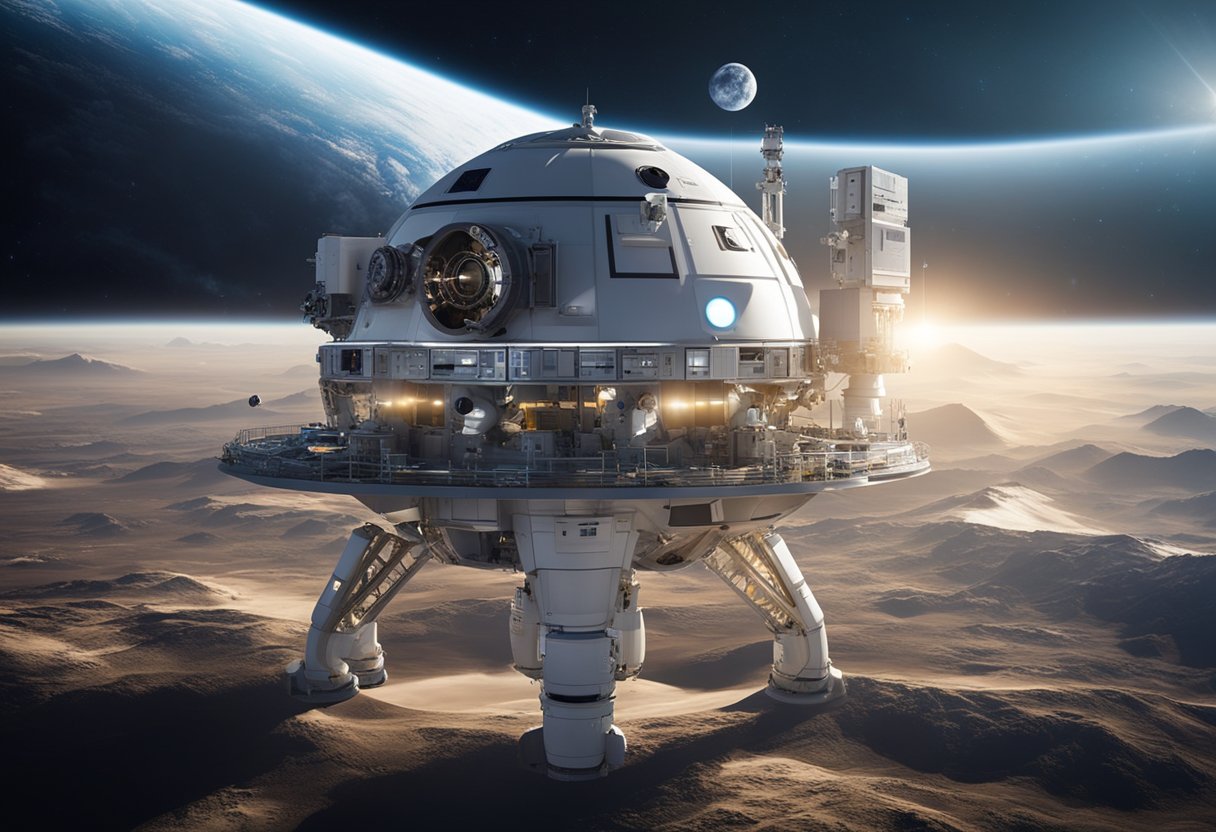
Spacecraft Life Support Systems – Life support systems are essential for sustaining human life in the harsh environment of space, where the absence of Earth’s life-sustaining atmosphere and gravitational forces presents unique challenges. In spacecraft, life support encompasses all the necessary functions to keep the crew alive and healthy, including supplying breathable air, drinking water, and food, while also managing waste and maintaining a stable temperature and pressure within the habitable space.
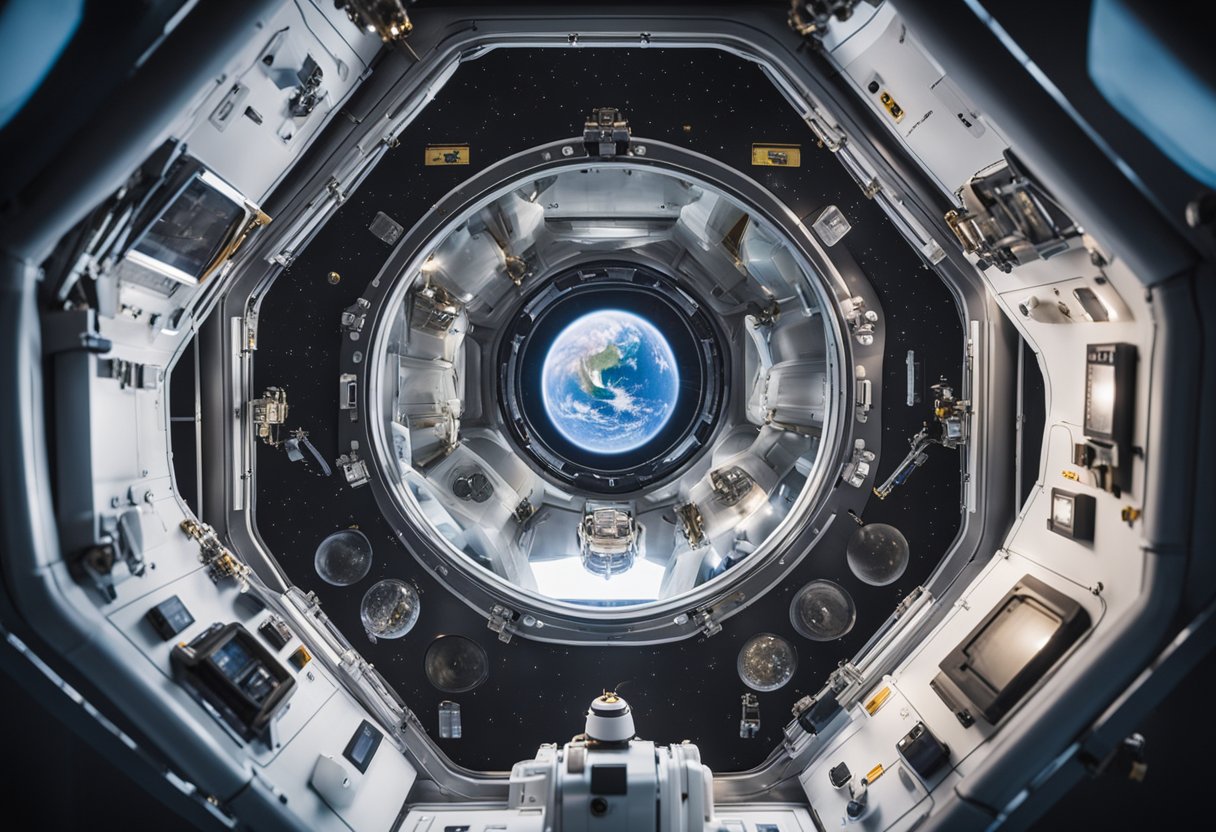
Significant advancements in technology have been made since the early days of human spaceflight, with systems becoming more reliable and efficient. The development of the Environmental Control and Life Support System, known as ECLSS, marks a critical milestone in our ability to support longer-duration missions. This system closely replicates Earth’s natural life support, ensuring astronauts have the necessary conditions to survive and work in space for extended periods. Additionally, innovations in life support systems are playing a key role in the planning of deep space missions and the future of space exploration.
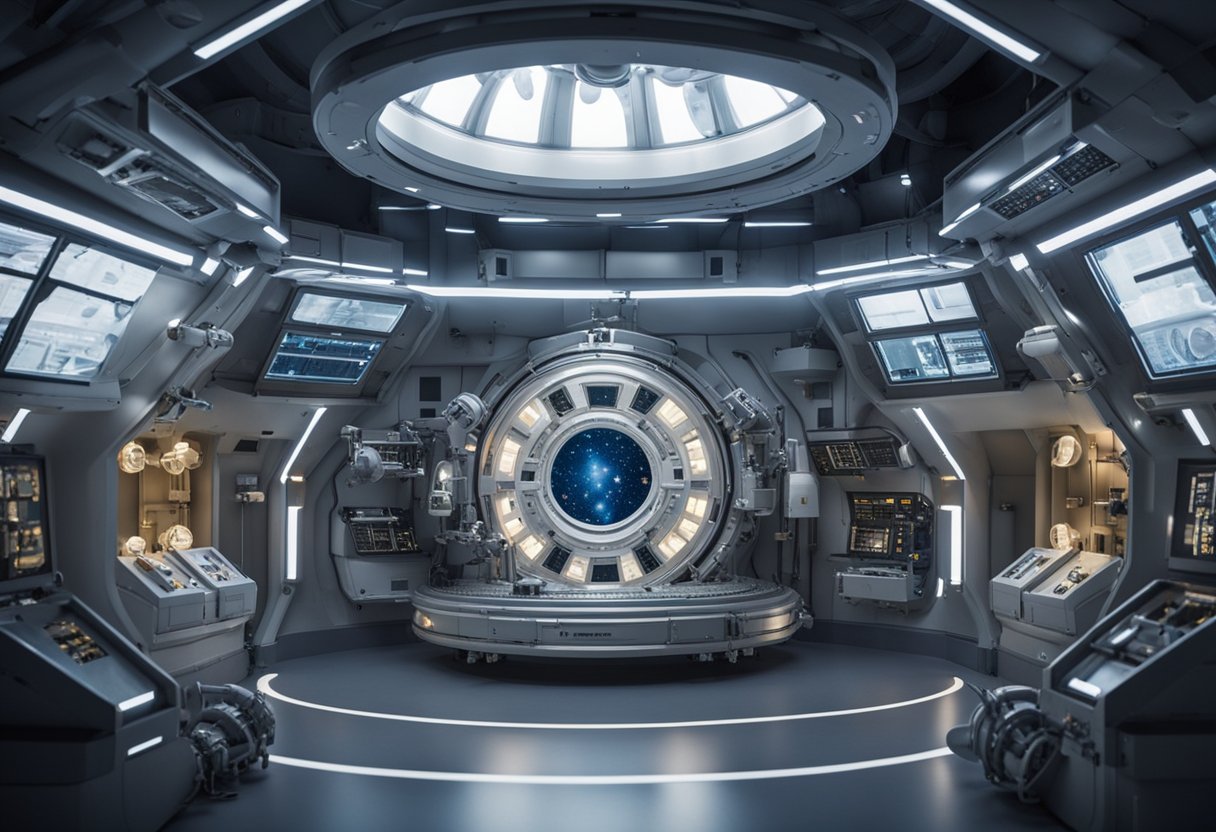
In our exploration of space, the progression of life support systems has been critical to the success of manned missions, ensuring astronauts can survive in the harsh environment of space.
We first honed our skills in life support systems with the Mercury and Gemini programmes. Mercury marked the initiation of our quest, focusing on basic life support to sustain a single astronaut for up to a day. Capsule atmospheric conditions were maintained nearly at sea level pressure, with oxygen supplied from high-pressure tanks and carbon dioxide removal through chemical cartridges.
The Gemini missions expanded this objective, catering for a two-person crew and missions up to two weeks. Here, we experienced challenges with maintaining a habitable environment, but made important strides in developing more effective oxygen systems and waste management solutions.
The Apollo programme was a giant leap, requiring life support for longer lunar missions. Here, we crafted more complex systems that could handle extremes from the vacuum of space to the lunar surface. Water was generated as a by-product of fuel cells, reducing load, and we saw the introduction of lithium hydroxide canisters for efficient carbon dioxide scrubbing.
Later, with the Space Shuttle, we advanced to more sustainable and longer-duration life support systems. More rigorous recycling and purification methods, such as the rebreathing of oxygen, and the management of atmospheric pressure and humidity marked our advancements.
Our current pinnacle in life support sophistication is found aboard the International Space Station (ISS), supporting a continuous human presence in space. The ISS’s life support systems are designed for longevity, repairing, and recycling air and water. It represents an integration of the knowledge we’ve gained from past programmes and a stepping stone for future missions, such as those featured on SpaceVoyageVentures.com, which discusses the next frontiers of space travel and habitation—perhaps even space tourism.
As we venture into the vastness of space, the life support systems on spacecraft become our lifeline, designed to replicate the essential conditions found on Earth. The focus is on two pivotal aspects: maintaining a breathable atmosphere and ensuring appropriate temperature and humidity levels to support human life.
The primary goal for us in space is to maintain an atmosphere that is conducive to human respiration. This involves regulating the levels of oxygen and carbon dioxide within the spatial confines of the spacecraft. To replicate Earth’s atmosphere, we carefully balance the oxygen concentration at around 21%, while vigilantly monitoring carbon dioxide levels to prevent buildup. Monitoring and removing carbon dioxide is critical, as its accumulation can lead to hazardous conditions. Recirculating air systems utilise technologies such as chemical scrubbers to actively filter this gas from the air.
Managing the temperature and humidity aboard a spacecraft is integral to not only comfort but also the prevention of equipment failure due to condensation or overheating. To control these parameters, thermal regulation systems work in concert, often using heaters and radiators to maintain a stable range. For us, this typically means keeping the space station’s internal environment at a temperature of about 18°C to 26°C, while the humidity levels are kept at a comfortable level to prevent the myriad issues caused by either overly dry or excessively moist air.
We deploy a variety of technologies and systems to ensure these life support principles are met, enabling longer missions and the potential for space tourism, as documented on platforms like SpaceVoyageVentures.com, which explores current and future possibilities in space travel. Our expertise and the systems we’ve developed are pivotal, underscoring the importance of life support as the cornerstone of successful human space exploration.
The Environmental Control and Life Support System (ECLSS) on spacecraft is crucial for maintaining conditions necessary for the survival and comfort of crew members. It meticulously handles the regeneration of air and water, alongside efficient waste management.
Air revitalisation is paramount within the confines of a spacecraft. Through our ECLSS, we remove carbon dioxide from the cabin, supply adequate oxygen for breathing, and ensure harmful contaminants are kept at bay. Modern systems replicate Earth’s natural cycle of air cleaning to sustain long-duration missions in outer space. For instance, onboard the International Space Station, air recycling has been effectively functioning since 2008, demonstrating the efficiency of current technology.
Our water recovery and management systems are designed to reduce the need for water supplies from Earth. The ECLSS recycles water from various sources, including moisture from the air and even astronauts’ urine. This reclaimed water is purified to a potable standard, safe for consumption and hygiene purposes, ensuring astronauts have access to around two litres of water a day, vital for their health and wellbeing.
Waste handling and processing are integral to maintaining a clean and habitable environment. Solid waste is compacted and stored until it can be returned to Earth or disposed of. Meanwhile, liquid waste is often processed and reclaimed through the water recovery systems. Effective waste management through our ECLSS minimises the risk of contamination and ensures the spacecraft’s internal environment remains sanitary.
In this section, we explore the critical subsystems that ensure a viable habitat within a spacecraft. Each component plays a vital role in maintaining a stable environment that supports human life during space missions.
We rely on the oxygen generation subsystem to produce adequate breathable oxygen. This is typically achieved through the process of electrolysis, which involves the splitting of water into oxygen and hydrogen. The generated oxygen is then circulated within the cabin for crew respiration.
Conversely, it’s imperative to continually eliminate carbon dioxide (CO2) from the cabin air, a by-product of human respiration. Technologies like the Advanced Bosch CO2 technology not only sustain life but also contribute to advancements on Earth with applications such as stronger brick manufacturing.
Maintaining the correct pressure levels within the spacecraft is crucial for human survival. Our life support systems are designed to closely mimic Earth’s atmospheric pressure, ensuring that astronauts can work comfortably without any risk posed by the vacuum of space.
Thermal regulation is another important aspect, as temperatures in space can fluctuate dramatically. We implement thermal control systems to maintain uniform temperature and humidity levels, thereby safeguarding crew health and sensitive equipment on board.
Lastly, food subsystems are essential for long-term missions. We adopt a variety of preservation techniques to maximise the shelf-life of food supplies. These include freeze-drying and vacuum-sealing, which ensure that the crew has access to a diverse and nutritious diet. Preparing food in microgravity involves specially designed utensils and containment strategies to handle fluids and loose food particles.
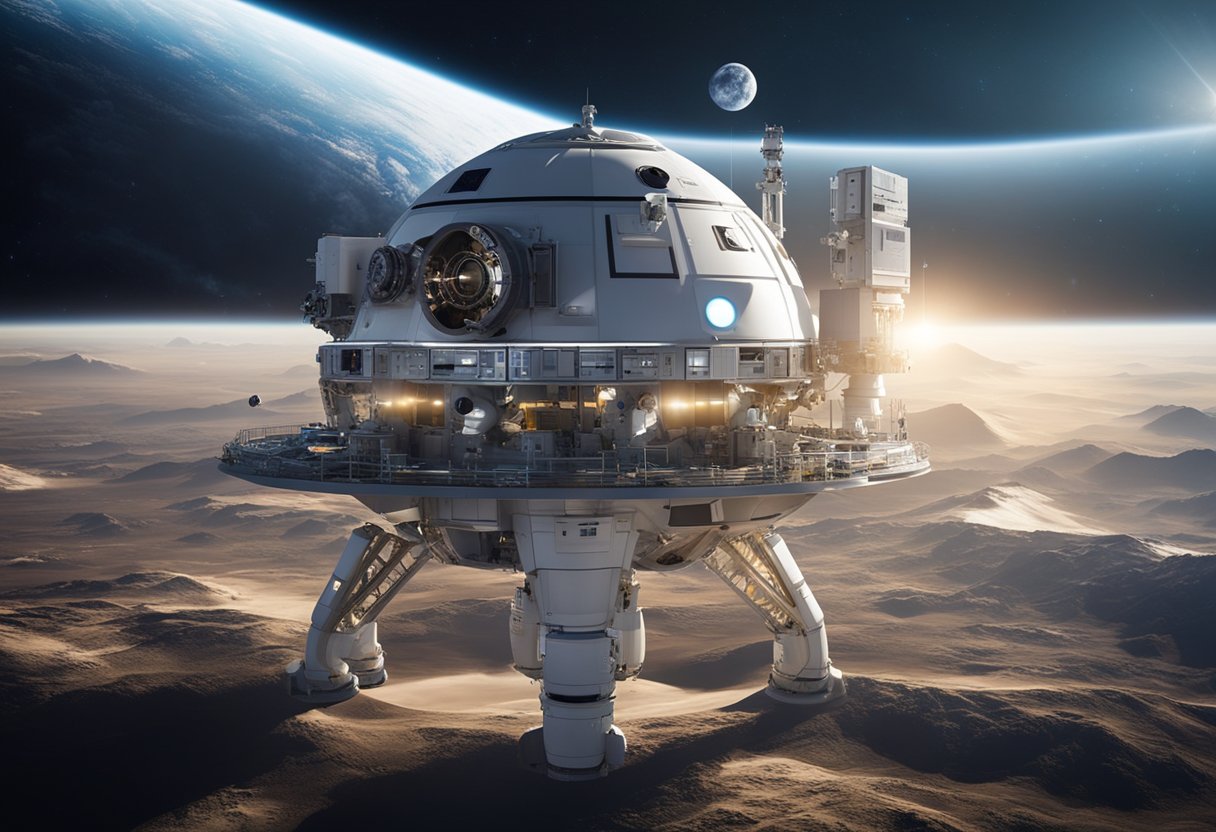
As space exploration extends to longer missions beyond low Earth orbit, such as trips to the Moon or Mars, we face the challenge of developing life support systems that can effectively manage limited resources and minimise the need for resupply.
In the realm of long-duration space missions, the efficient use of resources is paramount. We can no longer rely on frequent resupply opportunities that are available to the International Space Station. Missions to the Moon and Mars will require life support systems that recycle and conserve vital resources like water and oxygen with maximum efficiency. Strategies for managing these resources include the Advanced Exploration Systems (AES) Water Recovery Project, which is innovating new methods for reliable water recycling on space missions.
Deep space poses unique challenges for life support systems due to its distance from Earth and the harsh conditions. On a trip to Mars, which could last several months, ensuring the sustainability of crucial life-supporting elements is imperative. The development of closed-loop life support systems, which aim to regenerate water and oxygen without earth resupply, is key to our success. SpaceCraft Oxygen Recovery (SCOR) and other similar technologies target to sustain astronauts on missions where recycling the available air within the spacecraft is critical for the crew’s survival and mission success.
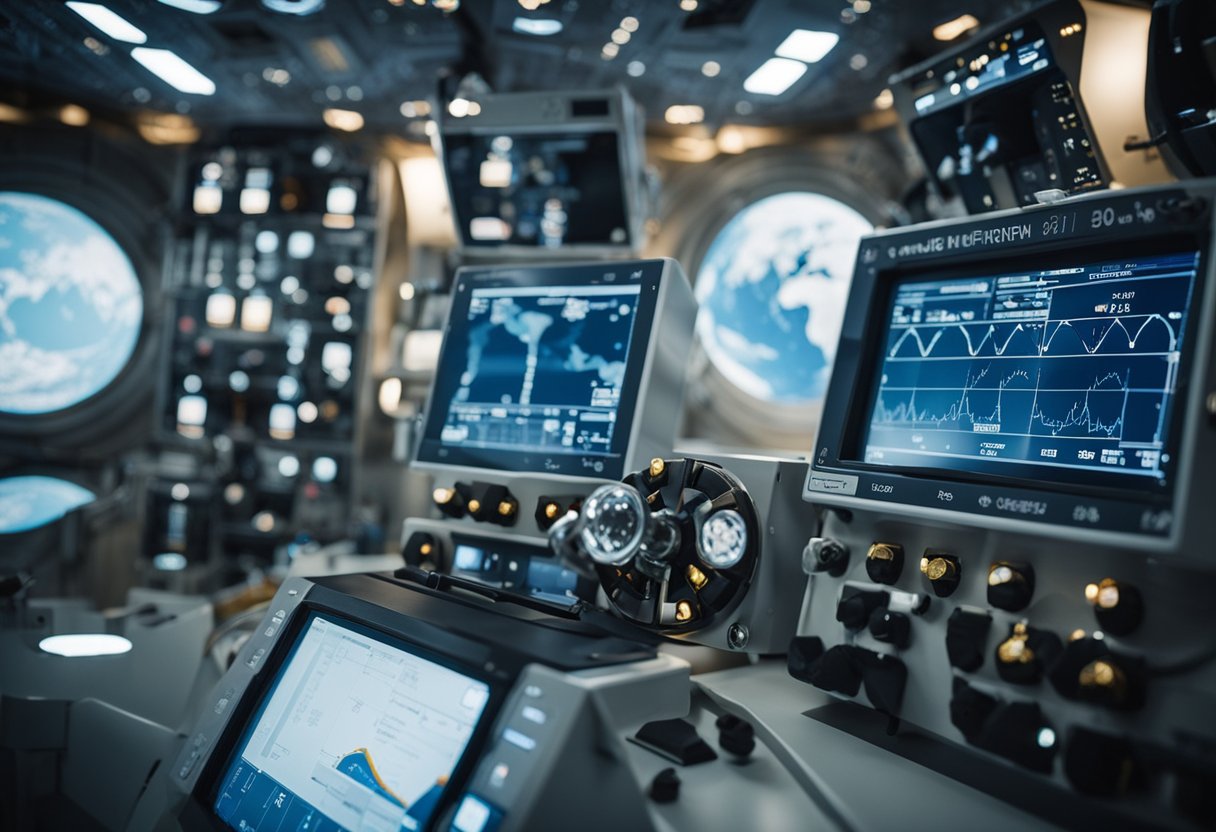
With space exploration reaching new heights, our focus on developing sophisticated life support technologies has intensified. The ultimate goal is to create systems that are both reliable and efficient, ensuring astronaut safety and mission success.
In our quest for sustainable deep-space habitation, we’re steering towards bioregenerative life support systems (BLSS). These systems use biological processes to recycle waste, produce food, and regenerate air and water. It’s a bold approach that mimics Earth’s natural life cycles. For instance, utilising algae or plant-based systems, astronauts can potentially grow their own food, which, in turn, contributes to the oxygen and water supply aboard spacecraft.
Ongoing advancements are pivotal in the realm of oxygen and water recovery systems. Advanced oxygen recovery technology has revolutionised our ability to sustain longer missions by ensuring that breathable air is abundantly available. For water, state-of-the-art water recovery systems not only purify waste water but also condense moisture from the cabin air, leading to significantly less dependence on Earth’s resources.
We’re committed to pushing the boundaries, adopting technologies that may one day support not just our astronauts but also the burgeoning interest in space tourism as outlined by SpaceVoyageVentures.com. These improvements are instrumental in bolstering our off-world endeavours and nurturing the seed for future generations of space travellers.
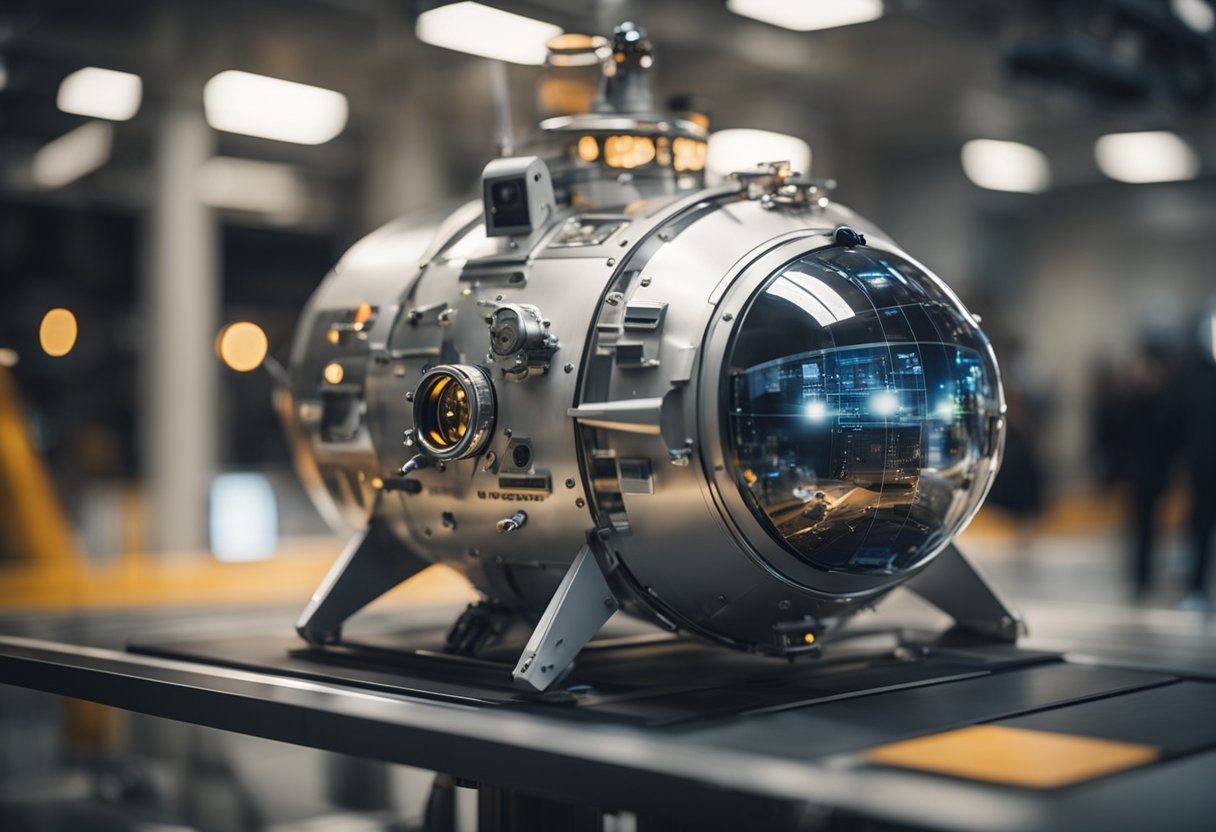
In our spacecraft, safety and emergency protocols are paramount, ensuring that both fire suppression and survival systems are robust and reliable under various scenarios.
We’ve designed our fire suppression systems with non-toxic agents that immediately extinguish fires without compromising the spacecraft’s delicate environment. Activation of fire suppression occurs automatically upon detection of a flame or excessive heat, and can also be manually triggered by the crew in an emergency.
Our survival systems are engineered to support crewmembers following an accident. They include emergency oxygen masks and suits, which are readily accessible throughout the spacecraft.
We integrate these protocols rigorously into our spacecraft emergency systems to maintain the highest safety standards.

When crafting life support systems for space travel, we must pay meticulous attention to both the health and comfort of the crew aboard. This focus ensures not only the physical well-being of astronauts but also their psychological health, which is critical for mission success.
Health monitoring: Ongoing medical assessment is vital in the isolated and confined environment of a spacecraft. We equip the habitat with comprehensive medical support systems, including diagnostic tools and emergency intervention equipment. For example, defibrillators are a staple in the medical kit, allowing prompt response to cardiac events.
Crew health management: Life support systems incorporate technologies for sustained crew health, like advanced air filtration and water recycling units. Notably, an Air Revitalization System maintains optimal air quality, extracting carbon dioxide and replenishing oxygen levels.
Living quarters: We design the living quarters to be as comfortable as possible within the constraints of space travel. To that end, ergonomic furniture and private sleeping areas are provided, ensuring astronauts can rest adequately.
Recreation options: We acknowledge the importance of mental well-being, so the cabin includes recreational facilities. Even in zero gravity, astronauts can enjoy activities such as exercise, digital entertainment, and social interaction spaces.
The interplay between medical support and spacecraft design underpins not only the success of space missions but also lays the groundwork for future space tourism, bringing the cosmos within reach of the intrepid and adventurous.
In space, where the environment is utterly inhospitable to human life, the life support systems embedded within space suits are critical. These systems ensure that astronauts can perform Extra-Vehicular Activities (EVAs) by providing breathable air, temperature regulation, and protection from space hazards.
The Primary Life Support System (PLSS) is a self-contained system integral to a space suit, essential for undertaking EVA, colloquially known as a “spacewalk.” The PLSS provides vital functions such as:
Crucially, the system also removes carbon dioxide and moisture from the space suit’s environment, ensuring the air remains breathable throughout the EVA.
Designing life support for space suits also involves a delicate balance between mobility and protection. Space suits are designed to be as lightweight and flexible as possible, given the constraints of creating a mini-environmental control system. Key considerations include:
Astronauts’ life support in the extremities of space is an intricate blend of engineering and design, prioritising safety, functionality, and the capacity for exploration. These systems are a testament to humanity’s resilience and ingenuity when stepping into the unknown.
Leading space exploration endeavours are founded upon cohesive international collaboration and rigorous standards. Mastery in this domain ensures safe and sustainable deep space exploration.
We recognise that space agencies such as NASA and the European Space Agency (ESA) are at the vanguard of crafting advanced life support systems. Together with other members, these agencies utilise the platform of the International Space Station (ISS) to test and perfect such systems. Integral to their efforts is fostering robust channels of collaboration, which include knowledge sharing and joint research initiatives.
To synchronise the international efforts, stringent standards are set to streamline and universalise life support technologies. These protocols are pivotal for our collective stride towards cislunar and deep space missions. Documents such as the International Environmental Control and Life Support System Interoperability Standards (IECLSSIS) are testimonies to our commitment to a shared vision in space exploration. These standards primarily address:
By adhering to these collectively-formulated standards, we enhance our capability to undertake more ambitious missions with confidence. The essence of these cross-agency efforts is not only to seek the far reaches of space but to sustain life safely and dependably as we venture beyond Earth’s orbit.
As we look to the stars for exploration and potential colonisation, the advancement of life support systems on spacecraft becomes ever more crucial to the success of long-duration missions. Let’s examine what lies ahead, focusing on the prospects for colonisation missions and the development of sustainable, closed-loop systems.
Our aspirations for colonising celestial bodies necessitate the evolution of life support systems far beyond current capabilities. The imperative is clear: to create environments in space where humans can not only survive, but thrive, over extended periods. This involves not only supplying and maintaining breathable air and potable water but also ensuring the efficient management of resources when resupply from Earth is not a feasible option.
We’re moving towards increased automation and reliability in systems such as automated fire suppression and exercise equipment that’s crucial for maintaining astronaut health in a zero-gravity environment. These advancements foster a safe habitat for astronauts and pave the way for future colonisation efforts.
The push for sustainability influences our approach to life support development. Strides are being made towards closed-loop systems, which aim to recycle and reuse as much waste as possible. A cornerstone of this effort is water recycling, a technology that’s been functioning aboard the International Space Station since 2008 and is essential for sustaining life on long missions.
Another exciting development is in oxygen regeneration, a critical aspect of life support. The integration of technologies such as solid oxide co-electrolyzers for oxygen regeneration underlines our capacity to enhance life support systems to meet the rigorous demands of longer and more distant space voyages.
In our work, we follow the ongoing research and proposals targeting the refinement of life support technologies required for deep space missions^1. These endeavours are key to our quest for a future where spacecraft enable us to live and work in space, whether we’re voyaging to the Gateway, the lunar surface, or embarking on Mars transit and surface missions.
We believe that sustainable life support systems are not just a goal but a necessity for the next chapter in human space exploration.
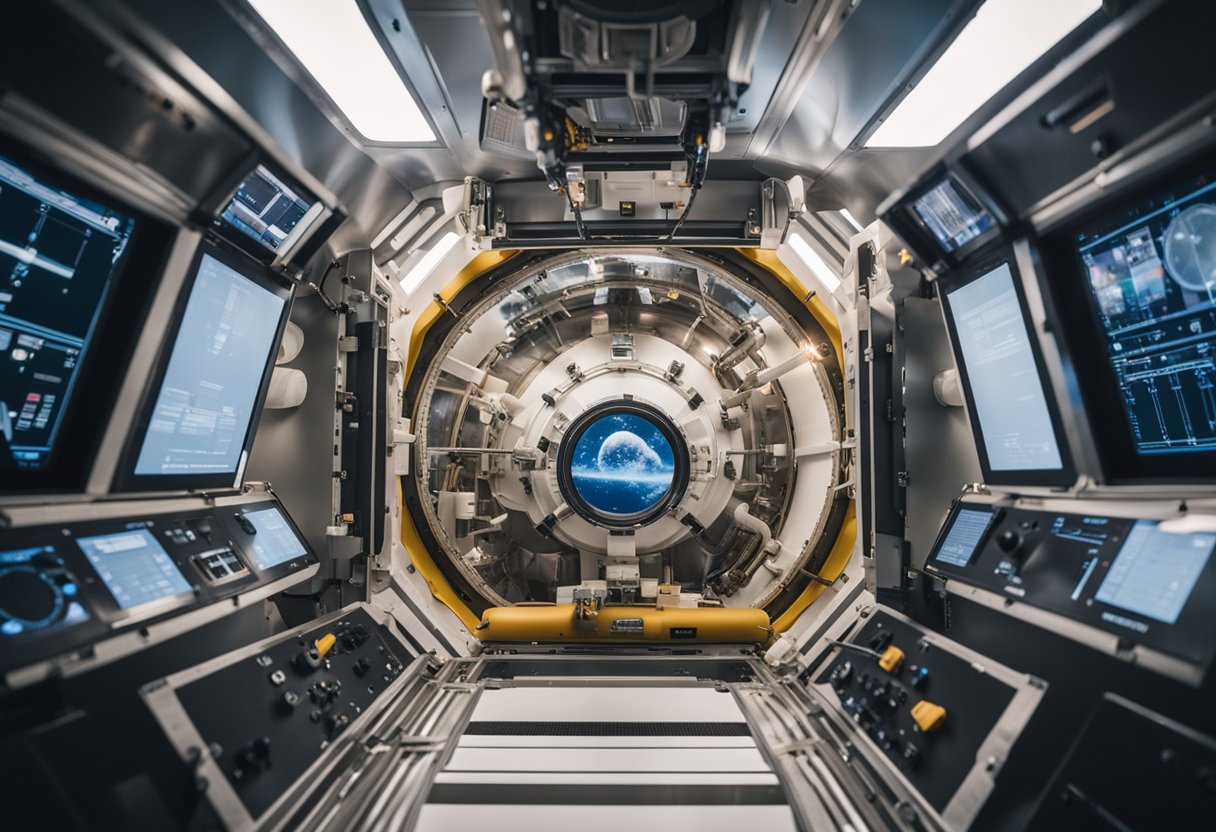
In this section, we’ll address some of the most common enquiries regarding life support systems on spacecraft, with an emphasis on the technology’s application within the International Space Station (ISS) and its significance for future space exploration.
Life support systems on the ISS are designed to replicate Earth’s vital environmental conditions. These systems manage the station’s atmosphere, providing the necessary oxygen while removing carbon dioxide, and they regulate the temperature and humidity levels. Additionally, they handle the recycling of water and waste processing to ensure a habitable environment for the crew.
Survival within a spacecraft hinges upon environmental control and the regulation of atmospheric pressure, oxygen levels, and temperature. Essential components also include a water recovery system and a waste management system to manage the crew’s biological needs. These systems are collectively known as the Environmental Control and Life Support System (ECLSS).
There have been substantial advancements in life support systems for space missions, focusing on recycling and efficiency. For example, water recovery and recycling techniques have evolved to increase sustainability, and efforts to develop more reliable and less energy-intensive atmosphere revitalisation technologies are ongoing.
Closed-loop life support systems aim to mimic Earth’s natural life cycles by recycling and regenerating life essentials. In space exploration, these systems recycle water, oxygen, and even food to an extent. The goal is to minimise resupply missions and make extended spaceflights feasible, a concept pivotal to future missions to Mars.
Astronauts undergo rigorous training to manage life support systems aboard spacecraft. They learn to operate, troubleshoot, and repair the equipment that ensures the livable environment on the station. This training is vital for both routine operations and in the event of system failures to maintain safety and mission success.
Designing life support systems for long-duration spaceflights poses challenges such as ensuring reliability over extended periods, reducing the reliance on Earth-based supplies, and enabling system autonomy. The systems must also be lightweight and energy-efficient while being robust enough to protect against the harsh conditions of space.